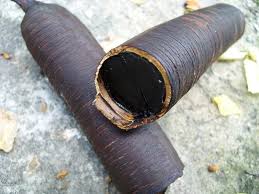http://www.siddhaherbs.blogspot.com
Cassia fistula or Amalatas or Aragavadha.
Golden Shower Tree, Indian Laburnum
,
Lantern Tree சரக்கொன்றை

In Ayurvedic medicine, Golden Shower Tree is known as aragvadha (disease killer). Its fruitpulp is used as mild laxative, against fevers, arthritis, vatavyadhi (nervous system diseases), all kinds of rakta-pitta (bleeding, such as hematemesis or hemorrhages), as well as cardiac conditions and stomach problems such as acid reflux. The root is considered a very strong purgative. Self-medication or any use without medical supervision is strongly advised against in Ayurvedic and siddha texts. Its seeds are poisonous.Distinguishing Characteristics:

In the upper Sindu, the leaf poultice is applied to chilbrains; the plant is also used in facial massage for brain afflictions. In Far Eastern medicine, the uncooked pulp of the pods is used to treat constipation and prevent kidney stones. In the West Indies, the pulp and leaves is used as poultice for inflamed liver.
In Siddha medicine particular parts are gathered for combined formula.It is not taken raw; but the leaves are used to be added in bathing water.
(19)
http://www.siddhaherbs.blogspot.com
Cassia fistula or Amalatas or Aragavadha.
Golden Shower Tree, Indian Laburnum
,
Lantern Tree சரக்கொன்றை
This striking tree is just one of dozens of trees introduced to the University of Arizona campus by Warren Jones. Warren remembers bringing seeds from central Mexico during the 1980's. Germination and culture occurred at the UA greenhouses at the Campbell Avenue Farm. Seeds are similar to those of many other hard-coated legumes; germination is enhanced if seed coats are softened or scarified.
In Ayurvedic medicine, Golden Shower Tree is known as aragvadha (disease killer). Its fruitpulp is used as mild laxative, against fevers, arthritis, vatavyadhi (nervous system diseases), all kinds of rakta-pitta (bleeding, such as hematemesis or hemorrhages), as well as cardiac conditions and stomach problems such as acid reflux. The root is considered a very strong purgative. Self-medication or any use without medical supervision is strongly advised against in Ayurvedic and siddha texts. Its seeds are poisonous.Distinguishing Characteristics:
Leaves are
pinnately-compound leaves and up to a foot in length with shiny leaflets 4
inches long. Flowers are bright yellow, up to 3 inches long, and form in
hanging clusters 12 to 18 inches in length. Typically blooming occurs just
after the leaves drop in May. The pods are dark brown, cylindrical and can be
up to 2 feet long.
In folk medicine, the leaves and bark are grinded with water and applied externally to cure ringworms, insect bites, facial paralysis and rheumatism.
In the upper Sindu, the leaf poultice is applied to chilbrains; the plant is also used in facial massage for brain afflictions. In Far Eastern medicine, the uncooked pulp of the pods is used to treat constipation and prevent kidney stones. In the West Indies, the pulp and leaves is used as poultice for inflamed liver.
In Siddha medicine particular parts are gathered for combined formula.It is not taken raw; but the leaves are used to be added in bathing water.
(19)
http://www.siddhaherbs.blogspot.com

No comments:
Post a Comment